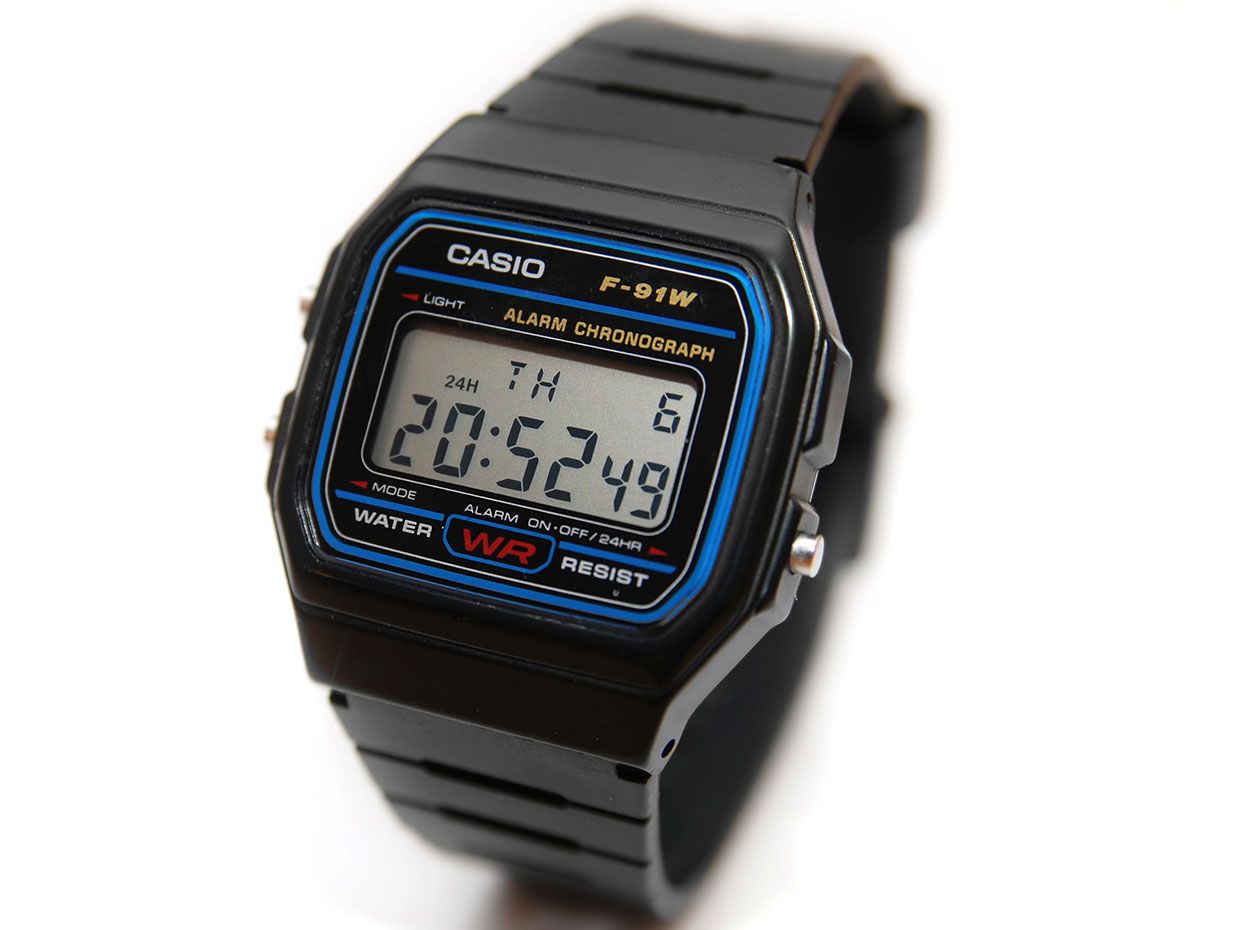The Consumer Electronics Hall of Fame: Casio F-91W Wristwatch
For about $10, this watch can do something that most luxury watches cannot: keep accurate time to within 1 second a day
The CasioF-91W digital wristwatch is a triumph of adequacy. It’s plain, utilitarian, and utterly dependable. When it was introduced in 1989 it sold for about US $20. Today—yes, it is still being manufactured 30 years after its introduction—you can get one for a little more than $10.
The best mechanical watches, some of which cost a lot more than $100,000, are accurate to within about 2 seconds a day. The average watch with a quartz movement, such as the F-91W, is accurate to within 1 second a day, which is the accuracy that Casio claims for the F-91W. It’s more accurate than anyone looking to spend a sawbuck on a watch should reasonably expect.
When it was introduced, it had a basic set of features, which included a daily alarm, an auto calendar, day/date display, and a stopwatch that does splits and marks time in hundredths of a second. It has three buttons, and if you’re reasonably bright you probably won’t need the manual to figure out what they do. But don’t ignore the manual [PDF], because it has one of the more entertainingly assertive notes concerning operator error in the consumer electronics industry:
“THERE IS NO WAY unit components can be damaged or malfunction, due to misoperation of buttons. If confusing information appears on the display it means entry sequence was incorrect. Please read the manual and try again.”
Well, okay then. Also, with newer versions, if you hold down the button on the right-hand side of the watch for several seconds, the display spells out “Casio,” a feature that supposedly indicates that the watch is a legitimate Casio product, instead of a counterfeit. (Strange but true: Even a $10 watch is vulnerable to counterfeit.) The F-91W’s LCD screen is clearly readable in the daytime, and at night there’s a greenish backlight that’s entirely adequate.
From the very first model three decades ago, none of that has changed. Nor has Casio ever changed the design. The common version of the watch has always had a black plastic case and a stainless-steel back. There have been versions with plastic cases produced in a color other than black, and also models with all-metal cases. But that’s it as far as fancy embellishment goes.
At precisely one-third of an inch thick, the F-91W is relatively thin and flat, compared to the hunky wristwatches popular today. It’s neither ugly enough to be shunned nor attractive enough to qualify as stylish. These days the watch gets lauded for its retro style, but that’s hard to credit. Can any item’s style be called “retro” when it simply hasn’t changed in three decades? Casio describes the design as “tried and true.”
It is water resistant. The battery lasts about seven years. Customers commend its resin strap for its longevity. The watch earns admiration for being durable and reliable. Granted, when applied to a wristwatch, “durable” and “reliable” are considerably fainter praise than “sexy” and “glamorous.” But did we mention that it costs $10? And, furthermore, there are photos of a prepresidential Barack Obama wearing it.
The watch does have something of a checkered past. In the mid-1990s, the F-91W became briefly notorious as “the terrorist watch.” Extremists in Pakistan and the Philippines learned how to use the F-91W as a timer for improvised explosive devices. The watch endured the bad publicity. More than 20 years later, it’s a bit of trivia that has faded from the consciousness of the watch-buying public.
Casio has never provided sales figures for its watches, nor has it revealed its manufacturing output. That said, a commonly cited estimate holds that the company has been producing roughly 3 million F-91Ws a year. Production levels have certainly varied over the years, but that 3 million figure, multiplied by 30—the number of years the watch has been available—gives a ballpark estimate: 90 million F-91Ws shipped. Even if that’s too high by millions, Casio has sold an astounding number of F-91Ws in a market with hundreds, maybe thousands of manufacturers and countless different models all told.
Today, the Casio F-91W is typically the first- or second-best-selling watch on Amazon (the “Casual Sport” version of the F-91W also ranks in the top 50). And it is still consistently included in reviewers’ lists of the best digital watches, invariably in the category of “best value.”
Brian Santo is the editor of CED magazine and a former Spectrum staffer. “Whenever Intel chooses to enter a market, there’s enormous potential for them to create fundamental changes in that market,” Santo says, explaining why Intel’s Larrabee chip was named this year’s semiconductor winner.
